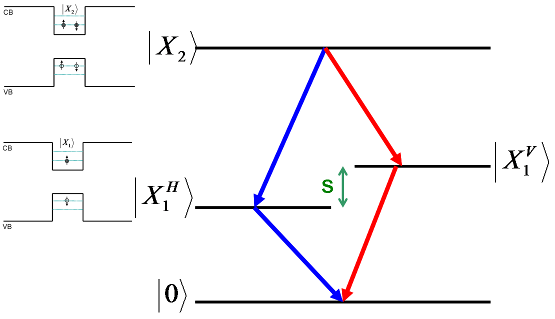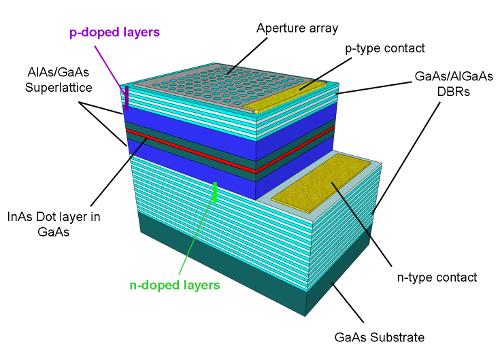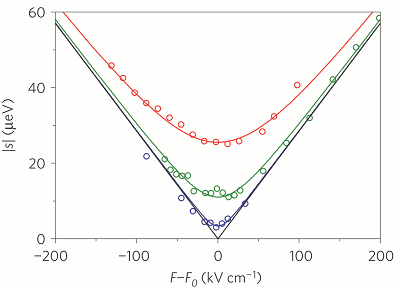Self-assembled quantum dots
Electrons and holes confined withing a quantum dot (QD) present an interesting multi-level system (see figure 1) which can be used to investigate quantum phenomenon. Our work uses Stranski-Krastanov grown QDs, which are embedded within layed semiconductor structures grown via molecular beam epitaxy. Quantum light sources are made by placing optically active InAs QDs at the center of a AlGaAs/GaAs/AlGaAs quantum well sandwiched between two sets of Distrobuted Bragg Reflectors. Appriopriate doping is used to form a p-i-n diode structure, which allows electric field to be applied to the QDs. A diagram of a typical device is shown in figure 2.


We perform quantum optics experiments to investigate the quantum properties of the carriers confined within a QD, with a view to developing applications in the field of quantum computation. In particular, we manipulate the energy levels of the QD via the application of external fields. The optically active nature of InAs QDs mean they can be used as an interface between flying photonic and stationary spin qubits; control of the energy eigenstates allows for the manipulation of the spin qubits when they are trapped within a QD. These factors, combined with the easily scalable nature of solid-state semiconductor materials, make QDs a very promising candidates for use in quantum computers.

For further information please contact: Matthew Pooley.
